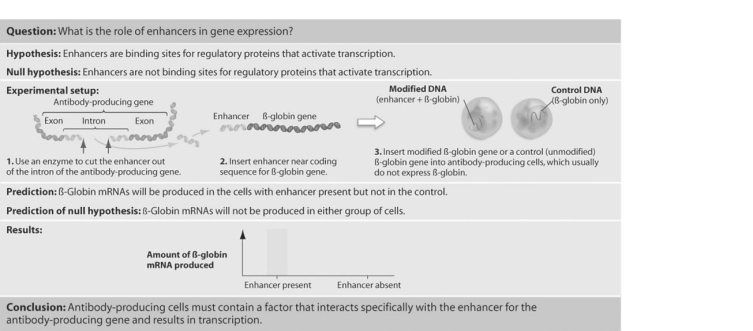Multiple Choice
 Figure 19.1
Figure 19.1
-In the experiment shown in the figure above, Tonegawa and his colleagues were able to express fi- globin in an antibody- producing cell that normally does not express fi- globin. They achieved this result by splicing an enhancer from an antibody- producing gene into the protein- coding portion of the fi- globin gene. They then introduced this recombinant gene into cultured antibody- producing cells. Why was the choice of
Antibody- producing cells-rather than, say, muscle or skin cells-critical for the success of this experiment?
A) Only the antibody- producing cells have the correct regulatory transcription factors to bind to the enhancer.
B) Only the antibody- producing cells are capable of expressing recombinant genes.
C) Only the antibody- producing cells have the correct set of enhancers, promoter- proximal elements, and promoters.
D) Only the antibody- producing cells have the correct set of enhancers.
E) Only the antibody- producing cells have the correct set of promoter- proximal elements.
Correct Answer:

Verified
Correct Answer:
Verified
Q1: Imagine that you are studying the control
Q2: <img src="https://d2lvgg3v3hfg70.cloudfront.net/TB6548/.jpg" alt=" Figure 19.1 -Predict
Q4: Imagine you've isolated a yeast mutant that
Q5: Regulatory transcription factors<br>A) influence the assembly of
Q6: In colorectal cancer, several genes must be
Q7: One way to detect alternative splicing of
Q8: If a cell were unable to produce
Q9: The rate of translation can be slowed
Q10: Histone acetyl transferases exert their effect on
Q11: The TATA- binding protein TBP) binds to<br>A)